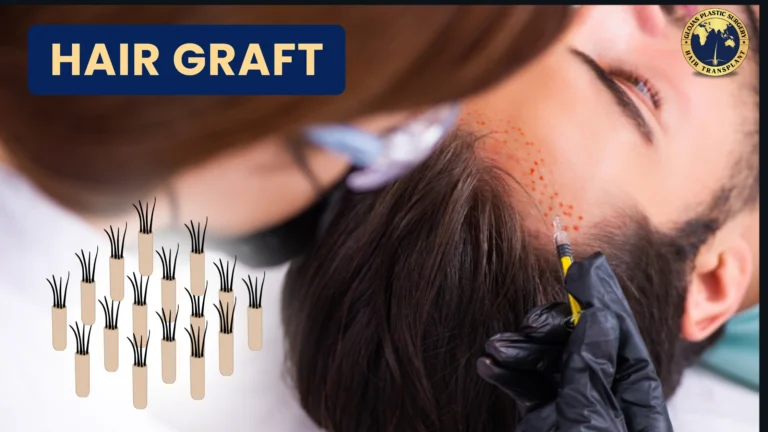Dealing with Hair Loss?
Hair loss can be a distressing condition, affecting not just your scalp but also your confidence and self-image. It commonly results from genetics, hormonal changes, medical conditions, or the natural aging process. While losing 50 to 100 hairs a day is normal, more significant loss can signal an issue. Fortunately, advances in medical technology have brought forth several effective treatments to combat hair loss, offering hope and solutions to those affected.
Understanding Hair Graft
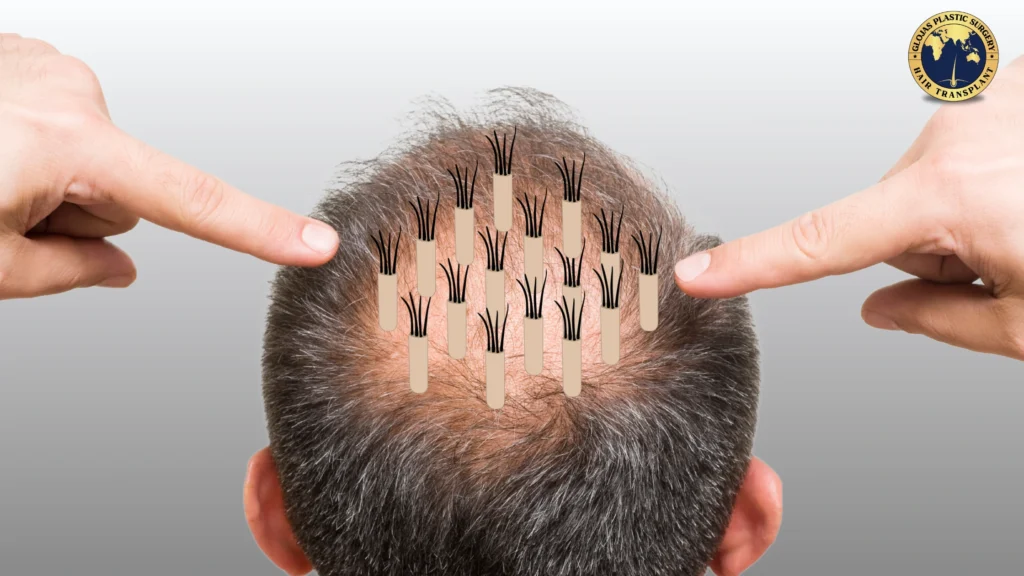
Define hair graft and its significance in hair growth.
A hair graft is a small piece of skin tissue containing hair follicles that is transplanted from a donor area of the scalp to a balding or thinning area. The primary goal of a hair graft is to restore growth in areas of the scalp affected by hair loss, such as in cases of male pattern baldness or other forms of alopecia. These grafts, once successfully transplanted, continue to produce hair in the new location in a natural growth pattern. This helps to create a fuller, more uniform look, significantly improving the aesthetic appearance and boosting the individual’s confidence.
Explain the different types of hair graft procedures, including follicular unit extraction (FUE) and follicular unit transplantation (FUT).
FUE
FUT
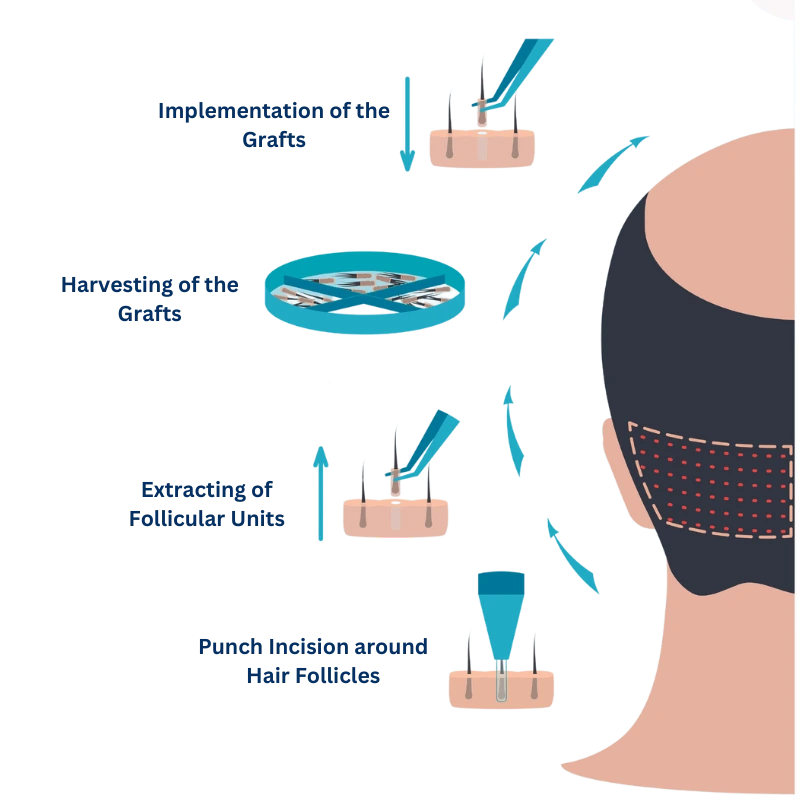
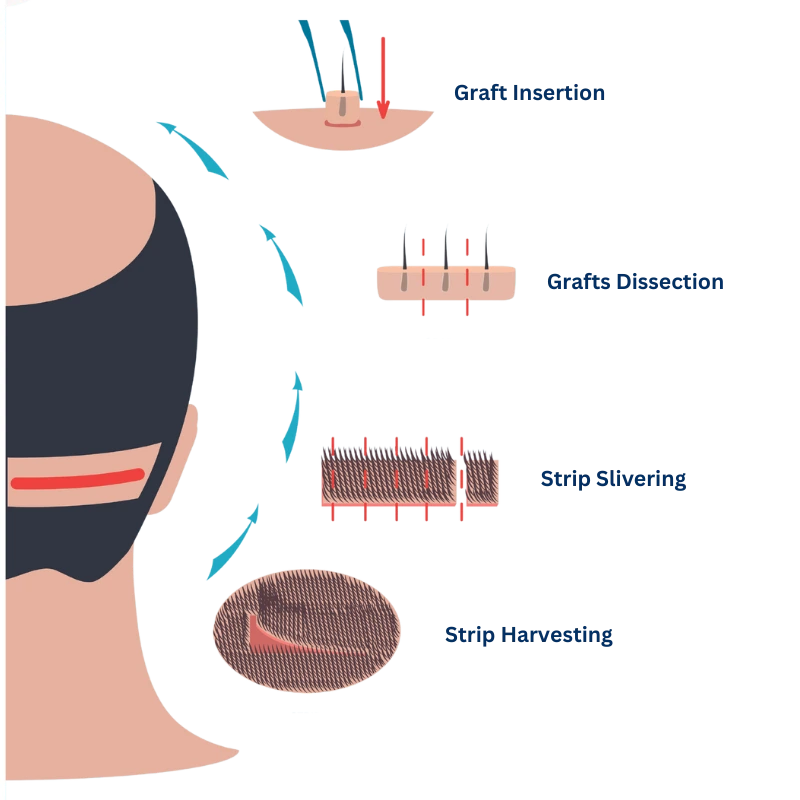
Hair transplant procedures primarily consist of two types: Follicular Unit Extraction (FUE) and Follicular Unit Transplantation (FUT).
- Follicular Unit Extraction (FUE): In FUE, each hair follicle is individually removed from the donor area using a small punch tool. This method is favored for its ability to heal faster and with less visible scarring, allowing the patient to return to normal activities sooner. FUE is particularly advantageous for individuals who prefer shorter hair styles or those who wish to avoid a linear scar.
- Follicular Unit Transplantation (FUT): FUT involves removing a strip of skin from the donor area and then dissecting it into individual follicular units. These units are then transplanted to the balding areas. While FUT generally leaves a linear scar, it allows for a higher volume of grafts to be transplanted in a single session and is typically recommended for patients requiring extensive coverage.
Both techniques are highly effective and differ mainly in the method of extracting hair follicles and patient suitability based on lifestyle, hair loss extent, and personal preferences.
Cost of Hair Transplant
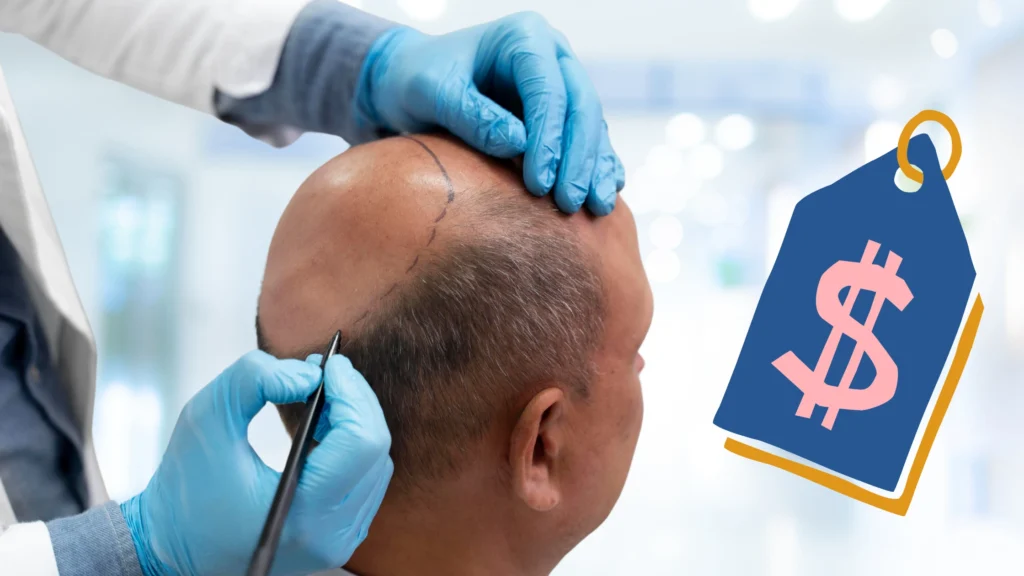
Discuss factors influencing the cost of a hair transplant.
Hair transplant cost can vary widely depending on several factors. These include:
- The type of hair transplant procedure chosen: FUE might be more expensive than FUT due to its labor-intensive nature.
- The number of grafts required: More grafts mean more time and resources are needed, increasing the overall cost.
- The geographic location of the clinic: Clinics located in metropolitan areas or in countries with higher living costs might charge more.
- The expertise and reputation of the surgeon: Highly experienced surgeons or those with a specialized reputation in hair restoration typically command higher fees.
- Additional treatments: Some patients may require additional treatments suchon as scalp treatments or PRP (platelet-rich plasma), which can add to the total cost.
Provide insights on the average cost of a hair transplant procedure
On average, the cost of a hair transplant in the United States can range from RM4,000 to RM15,000. It’s important to remember that most health insurance plans do not cover hair transplants as they are considered cosmetic procedures. It’s advisable for individuals considering this procedure to consult with several clinics to compare pricing and treatment options, and potentially to look for financing alternatives that can make the process more affordable. Always ensure that the clinic offers a good balance not only in terms of cost but also in expertise, technology, and post-operative care services for the best results and experience.
Hair Transplant Process
Explain the procedure of a hair transplant surgery
Hair transplant surgery is a refined procedure that offers a permanent solution to hair loss. The surgery typically follows a standard set of steps, starting with a consultation where the surgeon evaluates the patient’s hair loss pattern and discusses potential outcomes. On the day of the procedure, the scalp is first cleaned and then treated with a local anesthetic to minimize discomfort. The next stage involves the extraction of hair follicles from the donor area, which is usually the back of the head where hair is more resistant to balding.
After the extraction, these follicles are carefully prepared under a microscope to ensure they remain intact and viable for transplantation. The recipient area is then prepared, where tiny incisions are made to place the follicle units. The orientation and placement of these grafts are crucial as they determine the natural look and direction of the new hair growth. The entire process can take anywhere from four to eight hours, depending on the extent of the transplant.
Detail how hair follicles are harvested and transplanted for natural hair growth
The harvesting of hair follicles plays a critical role in the success of a hair transplant. In Follicular Unit Extraction (FUE), each follicular unit is individually taken directly from the scalp without a strip of tissue being removed. This method reduces scarring and allows for a quicker recovery. Surgeons use a specialized punch tool to make a small circular incision around the follicle to isolate the graft. This precise technique helps in preserving the vitality of the follicles, ensuring better survival rates post-transplant.
The transplanted hair follicles are meticulously placed in the thinning or bald areas in a pattern and density that mimics natural hair growth. Careful attention is paid to the angle and depth of each implanted follicle, which promotes a seamless, natural-looking hairline. The success of this meticulous placement not only improves the cosmetic outcome but also encourages healthy and sustainable hair growth.
Graft Count in FUE Transplant
Explain the concept of graft count in FUE hair transplantation
In FUE hair transplantation, the term ‘graft count’ refers to the number of follicular units that are extracted and then transplanted to the recipient area. Each graft can contain one to four hairs, typically depending on the natural grouping of hair in the donor area. The number of grafts required for a successful transplant varies from patient to patient and is determined based on their specific hair loss condition, hair characteristics such as thickness and density, and the size of the area to be covered.
Calculating the appropriate graft count is critical because it influences both the aesthetic and practical outcomes of the surgery. An accurate count ensures that the hair appears dense and blends seamlessly with the existing hair, achieving a natural look.
Discuss the importance of single, double, and triple hair grafts in achieving desired results
Single, double, and triple hair grafts refer to the number of hair strands in each follicular unit. Single hair grafts are crucial for creating a natural-looking hairline, as they offer softness and a subtle gradient to the edge of the hairline. Double and triple grafts are used behind the hairline to add volume and density to the hair. By strategically placing these different types of graft, surgeons can craft a hair restoration that looks convincing and harmonises perfectly with the patient’s unique facial features.
Incorporating various graft types in the transplant process allows for a more tailored approach that caters to specific cosmetic needs, ensuring patients achieve the hair density and appearance they desire. This strategic placement is key to ensuring the transplant grows in as naturally as possible and meets patient expectations for fuller, healthier-looking hair.
Conclusion: Achieving Natural-Looking Results with Hair Grafts
Hair grafting procedures, whether it’s Follicular Unit Extraction (FUE) or Follicular Unit Transplantation (FUT), have shown promising results in the realm of hair restoration. By carefully selecting and transplanting hair follicles, surgeons can achieve natural-looking results that blend seamlessly with your existing hair. The key to successful hair grafts lies in the expertise of the surgeon and the use of advanced techniques to ensure minimal scarring and maximum hair growth. With the right post-operative care and patience, individuals can see significant improvements in hair density and appearance, restoring not only hair but also confidence.
